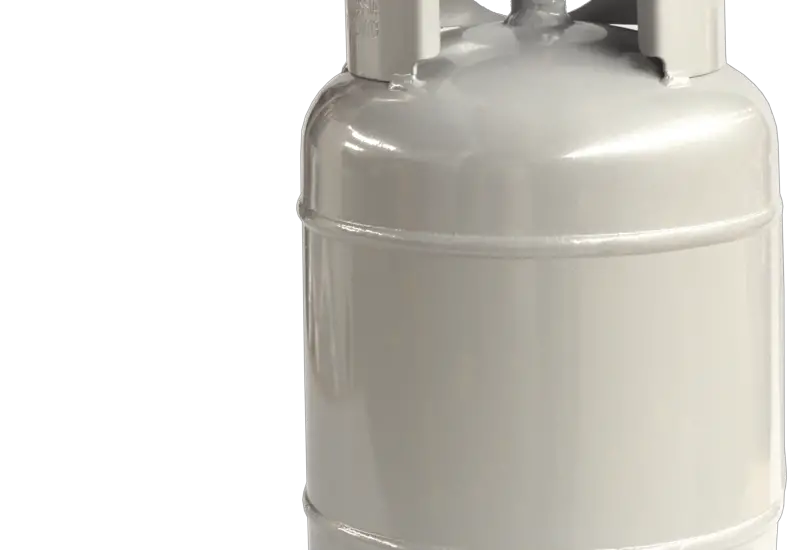Refrigerant viscosity might sound like jargon, but once you understand it, you’ll see how crucial it is for your cooling system’s smooth operation. It’s one of those little things that make a big difference, playing a key role in your system’s performance and energy efficiency.

Table of Contents
Understanding Refrigerant Viscosity
The term ‘viscosity’ gets thrown around a lot in the refrigeration industry, but what does it really mean? To put it simply, viscosity refers to a fluid’s resistance to flow.
Definition of Viscosity
Viscosity is like the traffic on a highway. Imagine the cars are molecules. The more congested the highway (i.e., the higher the viscosity), the harder it is for the cars (molecules) to move. And this principle applies perfectly to refrigerants in your cooling system.
The Basics of Fluid Viscosity
Viscosity isn’t just about traffic congestion. It’s also about the speed limit (shear rate) and the number of speed bumps (shear stress). And just like on a road, these factors can be influenced by external conditions.
Viscosity and Refrigerants
For refrigerants, the ‘speed limit’ and ‘speed bumps’ are dictated by factors such as temperature and pressure. The right balance can keep your refrigerant flowing smoothly, optimizing your cooling system’s performance.
Factors Influencing Refrigerant Viscosity
Temperature and pressure are like the weather and road conditions for our refrigerant ‘cars. They greatly influence how easily these ‘cars’ can travel in our cooling system ‘highway’.
Temperature’s Role in Viscosity
As the temperature rises, refrigerant viscosity decreases. Think about it: do cars move faster on a hot, dry day or a cold, icy one? It’s no different for refrigerant molecules. They flow more smoothly when it’s hotter.
Pressure’s Effect on Viscosity
Pressure, on the other hand, is like adding more cars to our highway. As pressure increases, our ‘road’ becomes more congested and our refrigerant molecules find it harder to move, thus increasing the viscosity.
Importance of Refrigerant Viscosity
So why should we care about refrigerant viscosity? Well, just like how smooth traffic is important for a city to function well, the right viscosity is vital for efficient heat transfer and overall system performance in our cooling systems.
Efficiency of Heat Transfer
Just like how a smooth-flowing highway allows for quicker deliveries, the right refrigerant viscosity ensures efficient heat transfer. The more efficiently your system can shift heat, the better it performs.
Role of Viscosity in Heat Transfer Coefficients
Viscosity can influence your system’s heat transfer coefficients – basically how quickly it can pick up and drop off ‘heat packages’. The right viscosity helps your system work efficiently, just like a well-organized delivery service.
Refrigerant Flow and System Performance
And just like how traffic flow affects the efficiency of a city, the flow of refrigerant through your system can have a big impact on performance. Too high a viscosity can clog up the works, while too low a viscosity might mean your ‘cars’ are moving too fast to pick up and drop off ‘heat packages’ efficiently.
Viscosity and Pressure Drop
High viscosity can lead to a high-pressure drop in your system – like a major traffic jam causing road closures. This means your system has to work harder, reducing its efficiency.
Viscosity’s Impact on Compressor Performance
Just like how a city’s transportation department might struggle with road maintenance if traffic is too heavy or too light, your system’s compressor might struggle to maintain efficient operation if the viscosity is not optimal.
Check out these other related articles…
Refrigerant Undercharge Symptoms: Comprehensive 411 Guide
How to Identify Refrigerant: A Comprehensive Guide
Refrigerant Quota: Your Ultimate Guide
Refrigerant Phase Out: Your Detailed Guide
HFC Refrigerant: Your Ultimate Guide
Measuring and Adjusting Refrigerant Viscosity
Just like traffic management involves monitoring and adjusting conditions for optimal flow, managing refrigerant viscosity involves careful measurement and adjustment.
Techniques for Measuring Viscosity
So, how do we keep tabs on our refrigerant ‘traffic? There are a couple of tools at our disposal, such as viscometers and rotational methods.
Viscometers
Viscometers are like our traffic cams, giving us real-time information about how our ‘cars’ are moving. They let us measure the resistance to flow in our refrigerant, helping us gauge its viscosity.
Rotational Methods
Rotational methods, on the other hand, are like doing a helicopter traffic survey. By measuring the force required to rotate an object in the refrigerant, we can estimate its viscosity.
Adjusting Refrigerant Viscosity
But it’s not enough to just monitor our ‘traffic’ – sometimes, we need to take action to keep things running smoothly. This is where adjusting temperature, pressure, and even adding additives come into play.
Adjusting Viscosity with Temperature and Pressure
Changing the temperature and pressure of your system can help control viscosity. It’s like adjusting the weather and road conditions for our ‘cars’ – not always easy, but sometimes necessary for smooth running.
The Role of Additives in Viscosity Modification
Additives are like our traffic control measures – they can help regulate flow and maintain optimal ‘traffic’ conditions. By carefully selecting and using additives, we can fine-tune our refrigerant’s viscosity for optimal system performance.